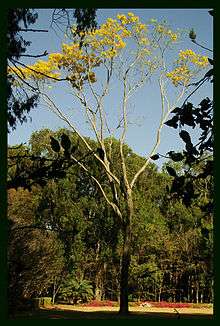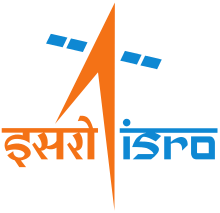Raman Research Institute
| Type | Research Institution |
|---|---|
| Established | 1948 |
| Director | Ravi Subrahmanyan |
| Students | 53 |
| Location |
Bangalore, India 13°0′46.51″N 77°34′51.78″E / 13.0129194°N 77.5810500°E |
| Campus | Urban |
| Website | www.rri.res.in |

Raman Research Institute (RRI) is an institute of scientific research located in Bangalore, India. It was founded by Nobel laureate C. V. Raman. Although it began as an institute privately owned by Sir C. V. Raman, it is now funded by the government of India.
Research
The main areas of research are:
- Astronomy and Astrophysics
- Theoretical Physics
- Light and Matter Physics
- Soft Condensed matter physics
History
Much before Raman thought about founding a research institute of his own, he had approached the then Maharaja of Mysore seeking land to build office and conference premises for the Indian Academy of Sciences (IAS), which was again a brainchild of Raman's. The Maharaja readily acceded to Raman's request and a 10-acre (40,000 m2) plot of land in the posh Malleshwaram suburb of Bangalore was allotted to the Indian Academy of Sciences in 1934. However, the Academy (headed by Raman) made no use of the land for seven years. According to the terms of the allotment, the land could be resumed by the government of Mysore at the end of 1941, if it remained unused. Therefore, in 1941, Raman as President of the IAS held an extraordinary meeting of the academy and proposed that a research institute (to be named after himself) be build on the land. This proposal was sanctioned and a stone was laid on the ground, signifying that the land was now in use. However, it was not until 1948 that the institute could be inaugurated. Raman had planned the institute much before he retired as the head of the Physics Department of the Indian Institute of Science. His idea had been to walk straight into his newly founded institute when he retired from IISc. This happened in 1948.
Thus, the Raman Research Institute began under the umbrella of the Indian Academy of Sciences. During Raman's own time, the presidency of the Indian Academy of Sciences and the directorship of the Raman Research Institute (RRI) were both vested in him and he was the undisputed supreme authority at both places. This highly personal style suited the temperament of the founder.
Another major facet of Raman's temperament was his hatred for writing project reports, or for that matter giving periodic status reports to those who fund projects. For this reason, Raman refused to accept any funds from the Indian government and other sources. "He was of the firm belief that science could not be done that way." says Prof. N. V Madhusudana, Dean of Research at RRI and a leading liquid crystal scientist. As a Nobel laurate, Raman enjoyed a monumental standing in Indian public life and was able to raise funds for the institute through private donations and fund-raisers which did not involve any governmental authority. "Till Raman's death, this was his private research institute. He had a very small group of research students working with him and a very few administrative staff" says Prof. Madhusudana.
Raman was clear that after his death, when the Presidency of the IAS and Director of the RRI could devolve upon different individuals, RRI should not remain subordinate to the IAS but should enjoy autonomy and have a distinct statutory identity of its own. Therefore, just before his death, Raman chartered out a framework for running the institute, separating it completely from the Indian Academy of Sciences and giving it statutory autonomy. The Institute adopted the change immediately after Raman's death in 1971 with the consent of the government, and stepped into a new era as a statutory body, functioning since 1972 on annual grants received from the Department of Science and Technology (DST), Government of India.

Achievements
Despite its budgetary and infrastructural constraints, scientists working under Raman did some path-breaking work. For instance, S. Pancharatnam, who joined the institute in 1954, discovered a fundamental quantum optic effect, independent of Raman. This work, according to Jayaraman, was "the most outstanding original piece of research that came out of RRI at that time."
This discovery proved for the first time that geometric phase exists in optics. But this work was not known to the world till similar discovery was made by scientists elsewhere about two decades later. Subsequently, RRI could convincingly prove that Pancharatnam discovered this long ago and today "this phase is called Pancharatnam Phase world over," said Madhusudana. Pancharatnam unfortunately did not live long enough and his brilliant career was cut short when he died in 1969 while in Oxford.
Collections
The institute also houses Raman's prized collection of gems, crystals, minerals, and rock specimens from all over the world. Raman, who was fascinated by the colours of the biological kingdom, also had a veritable collection of stuffed birds, beetles, and butterflies in his museum. It is said that Raman used to take a lot of pride in showing off his precious collections to distinguished visitors to the institute. During Raman's time, many celebrated scientists from other countries paid a visit to the institute. Among them were: J. D. Bernal, E. C. Bullard, P. M. S. Blackett, C. G. Darwin, P. A. M. Dirac, G. Gamow, J. B. S. Haldane, Linus Pauling, C. F. Powell, L. Rosenfeld, G. Wentzel and Norbert Wiener.
Liquid crystals
One of the current research priority areas of the institute is liquid crystals. This has been an active area of research at the Raman Research Institute for nearly three decades. The research programme covers a broad spectrum of activities ranging from the synthesis of new liquid crystalline materials to display electronics. Discoveries of the columnar phase formed by disc-like molecules and pressure induced mesomorphism are two of the early significant contributions made by the liquid crystal group. "Out of 36 liquid crystal materials discovered world over three were from this institute," said Prof. Madhusudana. Among them are two new liquid crystalline phases, namely the undulating twist grain boundary C phase and the biaxial smectic A phase.
Techniques developed for driving passive matrix liquid crystal displays at the institute are now being widely used. In recent years the liquid crystal group has been working on electrochemical aspects of surface science and on other soft materials like surfactants, polymers, and on the physics of biological systems
Astronomy and astrophysics
Astronomy and astrophysics has been another strong area of research for RRI. According to Prof. Madhusudana, this division accounts for the maximum number of faculty and research students of the institute. Over the last 20 years, it has been carrying out observational programmes in radio astronomy, covering almost the entire radio spectrum. Besides having a millimetrewave telescope of 10.4 metre diameter on the campus, RRI has set up the Gauribidanur Radio Observatory, a decametrewave Radio telescope at Gauribidanur, about 80 kilometres away from Bangalore, jointly with the Indian Institute of Astrophysics (IIA), Bangalore. This is one of the few largest telescopes that operate at the wavelength of 10 metre and is being used by RRI scientists to study radio emission from various types of celestial objects such as the Sun, Jupiter and similar radio sources in Milky Way and other galaxies.
Other radio telescopes that are being used by RRI scientists for observations are the Ooty Radio Telescope, at Ooty, and Giant Metrewave Radio Telescope (GMRT), near Pune, both set up by the Tata Institute of Fundamental Research (TIFR). RRI also played an active role in building the Mauritius Radio Telescope, a low-frequency radio telescope in Mauritius jointly with the University of Mauritius and IIA.
The major astronomical investigations pursued at the Institute can be broadly classified into the following categories: (i) Neutron Stars and Pulsars; (ii) cosmology; (iii) Diffuse matter in space; and (iv) Radio Sky Surveys.
Theoretical physics
The theoretical physics activity in the institute has centred on relativity and gravity, quantum theory, and optics. The current activity in gravitation centres on two themes, gravitational radiation and quantum gravity. Gravitation is known to be the weakest of all known forces of nature, but it dominates all structure and motion on the astronomical scale because of its attractive universality, its long range and the fact that matter on the large scale is essentially neutral. The correct theory of gravitation is now believed to be Einstein's General Theory of Relativity. One of the fundamental predictions of General Theory of Relativity is that of gravitational waves — waves of distortion of spacetime itself - propagating at a finite speed of light. This replaces the Newtonian gravitations forces which was instantaneous. Such waves are expected to be emitted when, for example, two massive inspiralling stars tend to coalesce under their mutual gravitations attraction. Accurate calculation of this gravitational radiation — its waveform — has been one of the major research programmes of the theoretical physics group at the institute. Their work is expected to be a crucial input towards its eventual detection.
Another major activity of the theoretical physics group has been in studying propagation of light waves in certain types of liquid crystals and minerals and their associated polarization phenomenon. RRI has been a pioneer in this field of study which was actually initiated by one of Raman's research students, Pancharatnam.
External links
| Wikimedia Commons has media related to Raman Research Institute. |
